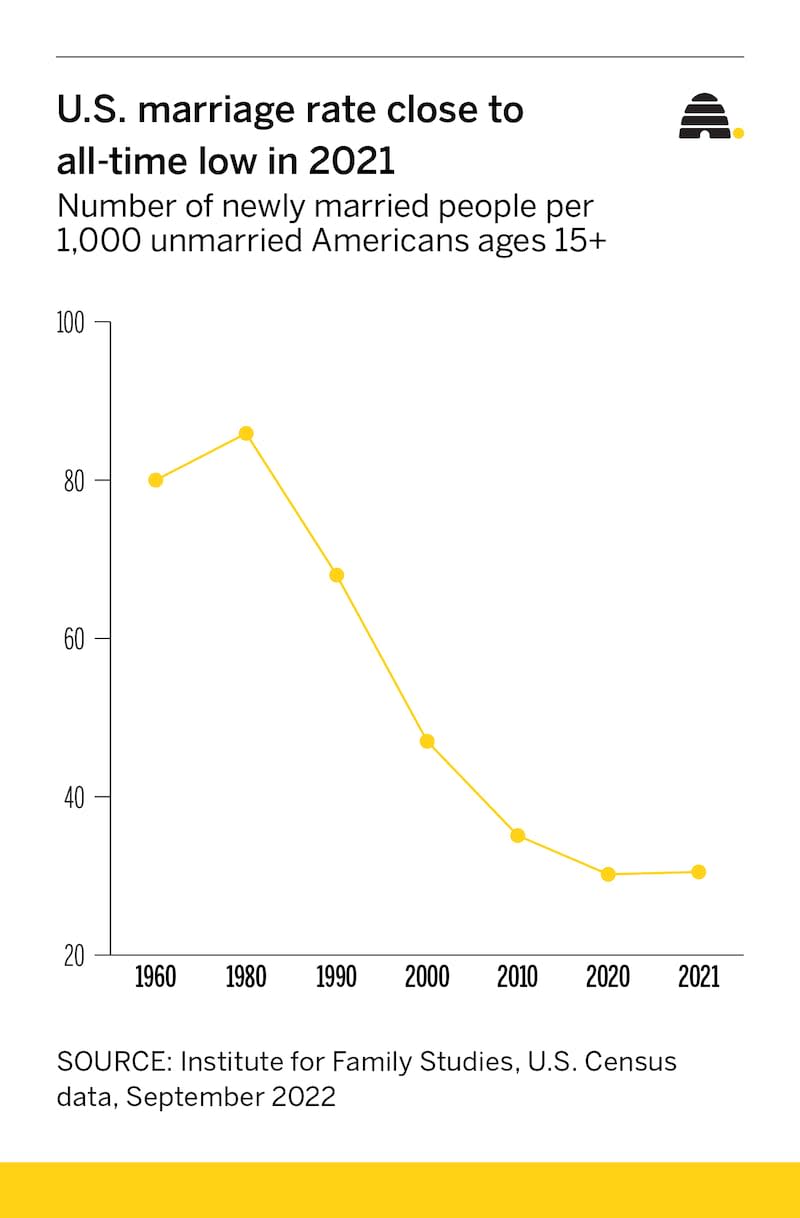The closing of the American heart

In the late 1990s, I began my study of marriage and family as a graduate student at Princeton University “for the sake of the children.” Then, I was concerned that our nation’s retreat from this core institution since the 1960s was harming children. And at that point, the share of children residing with their married, biological parents had fallen to about 65%, down from more than 85% in the 1950s.
Judging by scholarship by Melissa Kearney (2023), Paul Amato (2005), and Sara McLanahan and Isabel Sawhill (2015), there is no question that the concern I had was merited. To be sure, many children raised outside of an intact, married family do fine; I am one of them. But a large body of research also tells us that boys and girls from non-intact families are more likely to flounder and fail, compared to their peers from stably married families.
The most striking set of statistics I have seen in this regard follows:
Today, boys from non-intact families are more likely to spend some time in jail or prison before age 30 than they are to graduate from college.
By contrast, boys from intact families are about four times more likely to graduate from college than they are to spend any time incarcerated.
Clearly, marriage and stable families seem to matter for the sake of the children.
But when it comes to marriage and kids, we are now in a different moment. As I note in my new book, “Get Married: Why Americans Must Defy the Elites, Forge Strong Families, and Save Civilization,” the share of children being raised in stably married families is ticking up. From 2012 to 2022, the share of kids in such families rose from 57.8% to 58.9% (after falling pretty consistently from the 1960s). That’s the good news about marriage in America today.
But the bad news is that fewer men and women are finding their way to marriage. The marriage rate has dropped more than 60% since 1970 — to the point where only about 1 in 2 adults are currently married. What’s more: New demographic projections (Stone 2024) suggest that about 1 in 3 young adults will not marry by age 45 and maybe never marry. This would amount to a new high in the share of unmarried Americans, permanent bachelors and bachelorettes, across the land. The United States is witnessing the “closing of the American heart” with record shares of adults projected to never marry, not have children and otherwise live kinless lives.

Given the ways in which marriage provides a path to prosperity and happiness for both men and women, I am concerned about this retreat from marriage — for the sake of the men and women this time. Surging levels of non-marriage will leave more men and women vulnerable to poverty. That’s because unmarried women and men (18-55) are about five and two times more likely to be poor, respectively, than their married peers, net of controls for factors like race and education, as I explain in my new book. They are also almost half as likely to be “very happy” with their lives — and significantly more vulnerable to loneliness, meaninglessness and suicide, even net of controls. Not surprisingly, new research from Brookings Institution’s Jonathan Rothwell indicates that one of the top predictors of deaths of despair, measured at the community level, is the share of men and women who are not married. Across America, less marriage seems to translate into more suicides, fatal overdoses and alcohol poisonings for ordinary adults.
Two millennia ago, Aristotle observed that we are “social animals.” This helps explain why, for most of us, our friendships and especially family relationships end up being more important than how much money we make, how much free time we have, what kind of degree is on our wall, or how satisfied we are with our career. Marital quality, for instance, better predicts men and women’s global happiness than education, money or job satisfaction, according to my analyses of the General Social Survey.

In fact, as I noted in “Get Married,” “Marital quality is, far and away, the top predictor I have run across of life satisfaction in America. Specifically, the odds that men and women say they are ‘very happy’ with their lives are a staggering 545% higher for those who are very happily married, compared with peers who are not married or who are less than very happy in their marriages.”
And yet today, a large minority of Americans either do not aspire to or do not feel like they can achieve marriage. Given the importance of marriage for economic security and the pursuit of happiness, policymakers and cultural elites must do a better job of making marriage attractive and attainable to ordinary young adults. And not just for the sake of the children, but for the sake of the men and women across America.
Brad Wilcox is a professor and director of the National Marriage Project at the University of Virginia and the author of “Get Married: Why Americans Must Defy the Elites, Forge Strong Families, and Save Civilization” (Harper Collins).